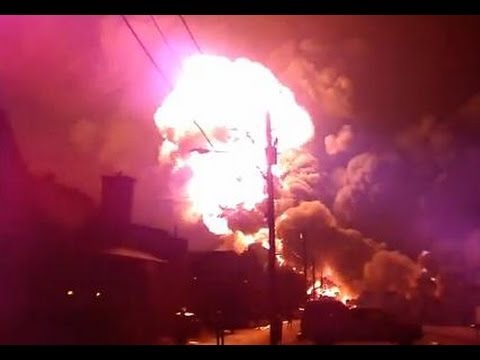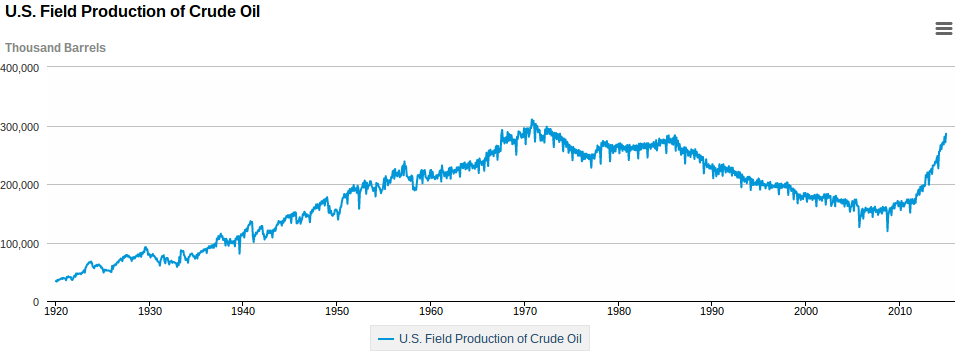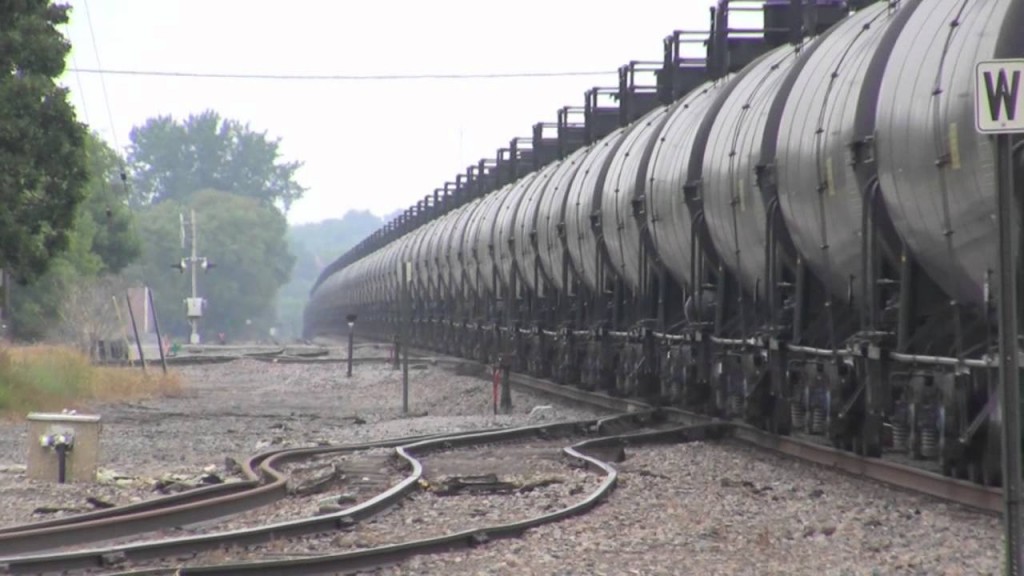Today the Federal Railway Administration announced a Rule focused on trains that accidentally “roll away”. The Rule is meant to fix an issue which occurred on July 6, 2013, in Lac-Mégantic, Canada, when an unattended train “rolled away,” crashed into the town – and because the train was carrying Bakken crude oil, the resulting explosion and fire destroyed the town, killing dozens of people.
The immediate cause was that the train had a single engineer on board. When it came time for him to stop the train and take a sleep break, he neglected to properly set the brakes allowing the train to eventually roll away. Because there was nobody on-board, nobody was on hand to stop the runaway train.
The ruling requires
- A qualified and trained railroad employee to properly secure the equipment and verification of the securement with a second trained and qualified employee;
- Additional communication, including job briefings among crew members responsible for the train securement;
- Properly installed and utilized exterior locks on locomotives;
- The setting of sufficient handbrakes;
- Removal of the train reverser; and
- The proper use of train air brakes.
The ruling affects not just trains carrying crude oil, but trains carrying ethanol or “poisonous by inhalation” (PIH) materials.
“Where the Federal Railroad Administration can take smart steps to quickly raise the bar on safety, it will, and that is exactly what we are doing today. Requiring that an additional, trained individual double check that the handbrakes have been set on a train will help stop preventable accidents,” said Acting Administrator Sarah Feinberg. “While today’s rule came out of a lesson learned from the Lac-Mégantic derailment, FRA will not hesitate to take additional actions to keep the rail system in the United States safe.”
As far as it goes the Federal Railroad Administration ruling on oil train safety is a good move. The rail industry, for cost cutting reasons, has moved to single-person crews for trains. That seems ridiculous and one wonders how many train derailments would be avoided with two-person crews which would allow crew members to “spell” each other and therefore stay more alert.
But …
I’ve covered some of the oil train derailments (Galena IL, Mount Carbon WV, Lac Megantic, Culbertson MT) and most oil train derailments (and explosions) are not due to single person crews neglecting to set the brakes properly.
The Galena wreck occurred in a track section where the train had just crossed a single-track bridge, and was in the middle of transitioning from single track mode to four parallel tracks (with trains on the other tracks). I haven’t looked to see if investigators have published a report, but it’s clearly not a situation of the train rolling away, but is more likely to do with the condition of the rails.
The Mount Carbon and Culbertson wrecks also did not feature a train rolling away, because in both cases the train was in motion in regular operation. Those wrecks are more likely to have been the result of rail conditions. The US has neglected its rail network for years and I suspect many rail accidents are due to substandard rail lines.
In other words – The Ruling misses the big picture cause of the oil train wrecks, because it was overly focused on the cause of the first oil train wreck. Going over the FRA’s recent press releases shows they are working on more issues than just the number of crew members.
To reiterate the real problem – shipment of crude oil by train has skyrocketed alongside the skyrocketing production of crude oil thanks to the fracking boom. By 2005 the US oil production had fallen to about 1/2 our peak of production in December 1970, the US was having to import vast quantities of oil which in turn was causing economic problems for the US economy.
Thanks to fracking, US oil production has almost returned to the 1970 peak. The oil is being produced in places that don’t have sufficient oil pipeline infrastructure, and therefore the oil industry has turned to the rail industry to transport crude oil to refineries.
Of course some of the trains derail, and overwhelmingly when an oil train derails it also goes boom.
The even bigger issue is that we are collectively still addicted to fossil fuels. Many people are focused on the explosion risk of oil trains – rightfully so – but they’re missing the fact that this is simply a symptom of fossil fuel dependency. For many reasons we collectively need to divorce ourselves from fossil fuels, and doing so would decrease the rates of shipping oil by rail, and therefore decrease the effect of oil train explosions, while at the same time making a huge positive contribution to the environment, climate and other issues.
The following are a few press releases from the Federal Railroad Administration. These demonstrate that there’s an engineering issue to solve. Officials are studying the root cause of oil train accidents and implementing technological fixes to reduce or eliminate the accidents. Doing so would remove oil train explosions from the nightly news, and eliminate the risk to urban areas etc from oil train explosions.
Fixing the technological problem in rail safety would not in any way fix the real problem of oil dependency.
March 13, 2015: Federal Railroad Administration Issues Directive to Replace Unapproved Tank Car Valves: involves “UNNR ball valves” being used on railroad tank cars, when those specific valves (made by McKenzie Valve & Machining LLC) were not approved for that use.
The FRA had “identified several railroad tank cars leaking small quantities of hazardous material”. For example, during the week of January 11th in a train of 100 tank cars loaded with crude oil, 14 of the cars were discovered to be leaking crude oil. The train was owned by BNSF Railway Company (BNSF), and was transporting crude oil from Tioga, North Dakota, to a refinery in Anacortes, Washington. That’s the same route as the Culbertson MT train wreck a couple weeks ago.
An FRA inspector looking at the train in Vancouver, WA, discovered the valves were completely wrong and that normal operation of the valves caused damage to the integrity of the system.
March 24, 2015: Statement Regarding March 24, 2015, American Petrolium Institute Press Release: Statement from Suzanne Emmerling, spokesperson for the U.S. DOT in response to a March 24, press release from the American Petroleum Institute (API): “It’s disappointing that API continues to look for reasons not to engage in improving safety. As Administrator Feinberg has said time and time again, while the rail industry has taken many steps to improve safety, we will always demand more and expect more from them. We continue to hope the energy industry will join in those efforts.”
Note, the Galena oil train wreck was about 2 weeks prior (on March 5).
April 17, 2015: DOT Agencies Take Coordinated Actions to Increase the Safe Transportation of Energy Products: The FRA is just one of the agencies of the Department of Transportation. The DoT overall is looking at oil train safety from several angles.
- At least one wreck was caused by faulty train wheels.
- The need to use the most experienced inspectors on oil train shipments
- Limiting top speed for oil trains in urban areas to 40 miles/hr
The big issue noted by this release is the massive increase in oil train shipments, due to the massive increase in oil production from the Bakken, other fracking areas in the U.S., as well as Alberta Tar Sands oil.
I’ve discussed the issue elsewhere, but these two pictures summarize the problem well.
The U.S. hit its peak of oil production in 1970 (308,264,000 barrels/month in December 1970) and — thanks to fracking — the U.S. has almost gotten to that production level again. The fields where the fracking oil boom is occurring aren’t well served by the existing oil pipeline network. In order to bring the Bakken (et al) crude oil to oil refineries, the oil industry has resorted to rail transport.
Effectively what we have is an oil pipeline on wheels.
Because all rail transport sometimes results in train derailments, an oil train derailment usually results in a fire/explosion that gets attention on the news. That’s the “if it bleeds it leads” effect.
May 1, 2015: DOT Announces Final Rule to Strengthen Safe Transportation of Flammable Liquids by Rail: This is the hoped-for comprehensive ruling on oil train safety, and was developed in cooperation with Canadian rail officials.
The rule:
- Unveils a new, enhanced tank car standard and an aggressive, risk-based retrofitting schedule for older tank cars carrying crude oil and ethanol;
- Requires a new braking standard for certain trains that will offer a superior level of safety by potentially reducing the severity of an accident, and the “pile-up effect”;
- Designates new operational protocols for trains transporting large volumes of flammable liquids, such as routing requirements, speed restrictions, and information for local government agencies; and
- Provides new sampling and testing requirements to improve classification of energy products placed into transport.
May 6, 2015: The FRA issued nearly $1 billion in loans to fund “critical safety upgrades to the nations largest commuter railroads” The same day an oil train derailed in North Dakota causing a large fire, and the evacuation of the town of Helmdal North Dakota.
May 13, 2015: An Amtrak train derailed in Philadelphia when the train began speeding, and traveling at too high a speed for that section of track. I wrote at the time that the rail industry has been fighting off attempts to get them to install positive train control systems which would automatically ramp down train speed, and have avoided that particular wreck.
July 22, 2015: Federal Railroad Administration to Railroads: Notification of Crude Oil Trains to States Must Continue![]() : This is another mandate the rail industry has been fighting – that they be required to give notification to authorities about hazardous shipments. A week prior to this FRA statement, I’d written about a comment from the American Railroads Association on this requirement to notify authorities of dangerous shipments. In the ARA’s opinion, doing so would allow terrorists (defined as including climate activists who might seek to damage rail shipments in a way to fight the oil industry) information they could use in targeting attacks on the rail system.
: This is another mandate the rail industry has been fighting – that they be required to give notification to authorities about hazardous shipments. A week prior to this FRA statement, I’d written about a comment from the American Railroads Association on this requirement to notify authorities of dangerous shipments. In the ARA’s opinion, doing so would allow terrorists (defined as including climate activists who might seek to damage rail shipments in a way to fight the oil industry) information they could use in targeting attacks on the rail system.
The FRA’s statement strongly reiterates the need for railroad operators to supply this information.
“Transparency is a critical piece of the federal government’s comprehensive approach to safety,” U.S. Transportation Secretary Anthony Foxx said. “DOT is committed to making certain that states and local officials have the information they need to prepare for and respond to incidents involving hazardous materials, including crude oil. The Emergency Order that requires these notifications still stands, and we expect railroads to fully comply.”
The requirement, part of an Emergency Order issued in May 2014, also directs railroads to include estimated volumes of crude oil, the frequency of anticipated train traffic, and the route the crude oil will be transported.
- The USA should delete Musk from power, Instead of deleting whole agencies as he demands - February 14, 2025
- Elon Musk, fiduciary duties, his six companies PLUS his political activities - February 10, 2025
- Is there enough Grid Capacity for Hydrogen Fuel Cell or Battery Electric cars? - April 23, 2023
- Is Tesla finagling to grab federal NEVI dollars for Supercharger network? - November 15, 2022
- Tesla announces the North American Charging Standard charging connector - November 11, 2022
- Lightning Motorcycles adopts Silicon battery, 5 minute charge time gives 135 miles range - November 9, 2022
- Tesla Autopilot under US Dept of Transportation scrutiny - June 13, 2022
- Spectacular CNG bus fire misrepresented as EV bus fire - April 21, 2022
- Moldova, Ukraine, Georgia, Russia, and the European Energy Crisis - December 21, 2021
- Li-Bridge leading the USA across lithium battery chasm - October 29, 2021













